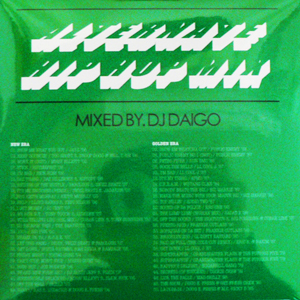

Industrial music’s Nine Inch Nails and Marilyn Manson, rap-rock’s Rage Against the Machine and Faith No More, the funk-centric Red Hot Chili Peppers and Primus, as well as the transcendent rock of The Smashing Pumpkins and Jane’s Addiction – all capitalized on the new thirst for angst. Meanwhile, the louder alt.rock scene assumed the space left by heavy metal. Pixies and R.E.M., already highly respected in the underground, also grew their fanbases, alongside like-minded newcomers such as Pavement, Elliott Smith, Weezer, and Beck. Sonic Youth – idols to countless punk bands, including Nirvana, who had opened for them in Europe just before Nevermind exploded – were finally getting radio and MTV airplay. Suddenly, middle-of-the-road music listeners were nudged towards exploring what was once considered the domain of indie-music fans, who initially viewed these newcomers as interlopers. The larger impact of grunge on 90s music was that it normalized what was once deemed countercultural. It became the best-selling touring festival of 1997. All of the above (less Morissette) also appeared on the inaugural Lilith Fair tour, McLachlan’s answer to Lollapalooza. This led to an explosion of multi-platinum singer-songwriters: Sarah McLachlan, Alanis Morissette, Sheryl Crow, Lisa Loeb, Paula Cole, Fiona Apple, Jewel, and the lone woman of color, Tracy Chapman. Towards the decade’s end, a rise of feminism (and female spending power) in 90s music would trickle up the pop charts. And after it did, the group’s 1992 album, Bricks Are Heavy, won acclaim for skillfully toeing the line between the grunge, alternative, and riot grrrl worlds. All flying-V riffs, head-banging hair, and “screw you” lyrics, L7 (along with Mudhoney) helped pioneer grunge before grunge broke. Hole drew attention to Love’s contemporaries, including Bikini Kill, Babes In Toyland, Bratmobile, and, later, Sleater-Kinney. Most female-fronted rock bands didn’t chart as well, but they did deal in a cultural currency that produced a vibrant feminist-rock scene. Celebrity Skin, its 1998 follow-up, ended up being their best-selling album. The group’s breakthrough album, the presciently named release Live Through This, dropped in 1994, a mere week after Cobain’s death. Regardless, Hole (fronted by Cobain’s wife, Courtney Love, a provocateur with a propensity for stage-diving) managed to benefit greatly from grunge’s popularity. Not to mention non-Seattle groups Bush, Stone Temple Pilots, and a pre-art rock Radiohead – all essentially distillations of the above. Still, for the most part, rock fans diverted their attentions to grunge, with Nevermind and its follow-up, In Utero, serving as a gateway to other bands related to the scene: former labelmates Mudhoney, the metal-inspired Soundgarden, classic-rockers-in-the-making Pearl Jam and the gloomier Alice In Chains. The more formidable acts ( Guns N’ Roses, Metallica, Aerosmith) transcended fads, becoming stadium bands. Heavy metal didn’t disappear it just reconfigured itself. It referenced everything from punk to garage rock to indie pop to country and blues. But what makes Nirvana such a great microcosm of 90s music was that their sound was not singular in scope.

It was dark, cynical, and so squarely “I don’t give a f_k” in a way that the industry’s self-aware harder rock acts fundamentally were not. The video for Nirvana’s “Smells Like Teen Spirit” quietly premiered on 120 Minutes, the network’s late-night stepchild, and was almost exotic in its betrayal of the channel’s visual conventions. Still, at that time, the impact of MTV as the arbiter of youth culture could not be understated. It was so lost that 1989 also marked the curious year that Jethro Tull won the best hard-rock/metal Grammy. In the lead-up to its inflection point ( Nirvana’s Nevermind), guitar-based music roughly fell into three categories: alternative rock, classic-rock standbys, and an already-dimming hair metal scene. The biggest curveball that 90s music threw us was, of course, grunge.


 0 kommentar(er)
0 kommentar(er)
